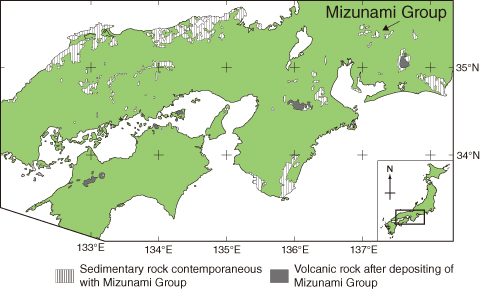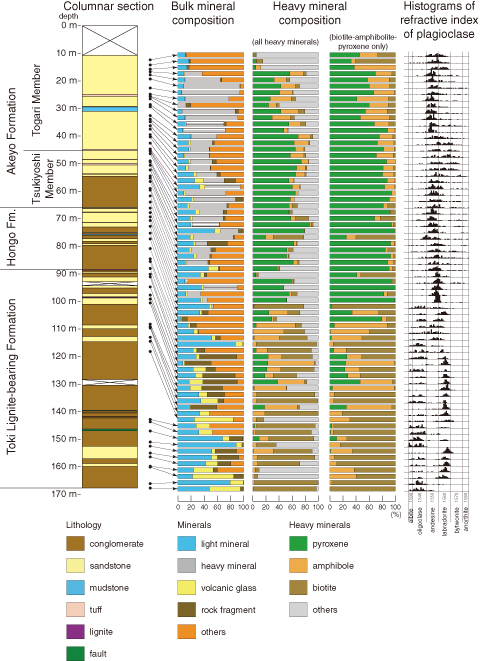
Fig.8-20 Distribution of sedimentary rock contemporaneous with Mizunami Group and volcanic rock after depositing Mizunami Group in Southwest Japan

Fig.8-21 Columnar sections of the studied drill core of the Mizunami Group with bulk and heavy mineral compositions and refractive indices of plagioclase
The Mizunami Group was deposited around the Mizunami Underground Research Laboratory between 20 and 15 million years ago. The group was deposited contemporaneously with the back-arc spreading event that formed the present-day Japan Sea and that involved extensive volcanic activity along the coast of the Japan Sea. However, in Southwest Japan, no volcanic activity seemed to have occurred during the deposition of the Mizunami Group (Fig.8-20).
When we studied the depositional age of the Mizunami Group, we found volcanic ash dispersed in the group. Such information, however, was obtained within a limited horizon, so we collected sandstone samples over a wider stratigraphic horizon and examined them to see if they contained volcanic ash.
In general, volcanic ash is composed of minerals and volcanic glass, but in older strata, volcanic ash is diagenetically altered to diagenetic minerals such as zeolite. We tried to find minerals that originated from volcanic ash. The Mizunami Group normally consists of sand and clay derived from basement granite and older sedimentary rock, so we tried to identify heavy minerals and plagioclase derived from other rock types.
The investigation revealed that sandstone contains volcanic glass and/or alteration products and that the sandstone mineralogically divides into three types: (1) characterized by the presence of biotite and variations in plagioclase from albite to oligoclase, (2) characterized by the dominance of amphibole and labradorite, and (3) characterized by the dominance of pyroxene and andesine (Fig.8-21). Because basement granite contains biotite and albite, type 1 sandstone derived from granite and types 2 and 3 derived from volcanic ash. Volcanic activity, which supplied volcanic ash to the Mizunami area, is divided into two phases based on variations in mineralogical and chemical compositions. These mineralogical and geochemical compositions suggest that the volcanic activity evolved over time.
The volcanic ash does not derive from volcanic activity along the coast of the Japan Sea. This study indicates that unrecognized volcanic activity occurred in and around the Mizunami area, even though the origin of the ash is unclear. This study reveals that unknown volcanic activity contemporaneous with Japan Sea formation occurred from central to western part of the Japanese Island.